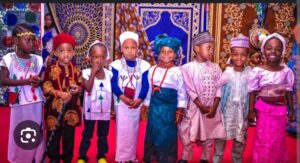By Sunday Chinenye

photo credit to Google
Education serves as more than just a means to acquire knowledge; it is instrumental in shaping our identities, influencing our values, and expanding our understanding of the world. A significant aspect of how education affects cultural identity is through language. Language transcends mere communication; it is a fundamental component of culture, embodying the history, traditions and perspectives of a community. Education plays an important role in preserving these cultural connections, promoting global understanding, and enabling individuals to engage deeply with their heritage.
Language is integral to cultural identity, conveying narratives, traditions, values and thought processes that are inherited through generations. Without language, a community’s history and customs risk disappearing. This is particularly critical for indigenous and minority groups, where language is key to safeguarding cultural knowledge and heritage. Educational institutions that incorporate local and indigenous languages into their programs can help these languages flourish, ensuring their cultural relevance endures for future generations.
In a rapidly globalizing world, multilingual education is essential for encouraging cultural exchange. Learning a new language involves more than just memorizing vocabulary; it is a chance to grasp the perspectives and social values of its speakers.
Schools enable students to maintain ties to their native languages while also acquiring new languages that expose them to a wider cultural context.
This dual approach not only enhances cultural identity but also offers cognitive advantages. Research has indicated that bilingual education promotes cognitive flexibility, problem-solving skills and increased empathy. It equips students to navigate a multicultural environment while deepening their connection to their own backgrounds.
Celebrating linguistic diversity in the classroom is another effective approach to intertwining language and culture in education. Modern classrooms often feature students from diverse linguistic backgrounds, a richness that should be embraced rather than viewed as a challenge. Schools can foster inclusive environments by honoring and celebrating the languages of their students through literature, music and art. This recognition cultivates belonging and legitimacy for students’ cultural identities, helping them feel valued and respected.
When students see their languages and cultures represented in educational settings, their confidence in academics increases, leading to deeper engagement with their studies. For students from marginalized communities, maintaining their native language is crucial not only for preserving tradition but also for fostering individual growth. Schools that promote bilingualism contribute to students’ pride in their heritage and instill a sense of empowerment, emphasizing the value of their culture.
Moreover, language is essential in developing global citizens. In a world that is increasingly interconnected, the ability to communicate and connect across cultures is vital. Language learning extends beyond mere conversation; it involves a deeper appreciation of various cultures, histories, and viewpoints. Mastering another language equips students with the cultural fluency necessary to navigate a global landscape, a skill that is highly valuable across numerous professional fields today.
